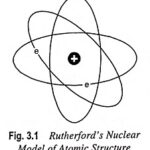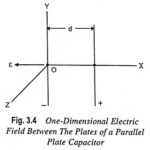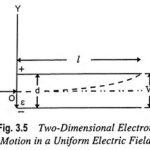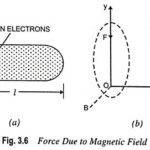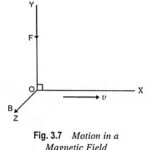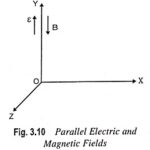Electron Dynamics Articles:
Rutherford Nuclear Model of Atomic Structure: In order to explain many phenomena associated with conduction in gases, metals and semiconductors and the electron emission from a metal surface, it is necessary to assume that the atom has loosely bound electrons which … (Read More)
Motion of Charged Particle in Electric Field: The electric field intensity which is equal to negative of the voltage gradient, is defined as the force (in newtons) acting per unit positive charge (in … (Read More)
What is Electron Volt? The joule (J) is the unit of energy in the SI system. In some engineering power problems this unit is very small, and a factor of 103 or 106 is introduced to convert from watts (1 W … (Read More)
What is Current Density? By definition, the current density, denoted by the symbol J, is the current per unit area of the conducting medium i.e., where current I is the rate of flow of charge. If N is the free electron density moving in … (Read More)
Two Dimensional Motion in a Uniform Electric Field: Let us consider that an electron enters the region between two parallel plates of a parallel plate capacitor oriented as illustrated in Fig. 3.5 … (Read More)
Force in a Magnetic Field: If a conductor of length l metres carrying current I amperes is placed in a magnetic field of intensity B (tesla), and if B is perpendicular to I, the force … (Read More)
Motion of an Electron in a Magnetic Field: Consider an electron to be placed in the region of magnetic field. If an electron is at rest, the force experienced by the particle, … (Read More)
Motion in Combined Electric and Magnetic Fields: The Motion in Combined Electric and Magnetic Fields is given by the below two names, namely Parallel Electric and Magnetic Fields Perpendicular Electric and Magnetic Fields Parallel Electric and Magnetic Fields – If both electric and magnetic fields … (Read More)
